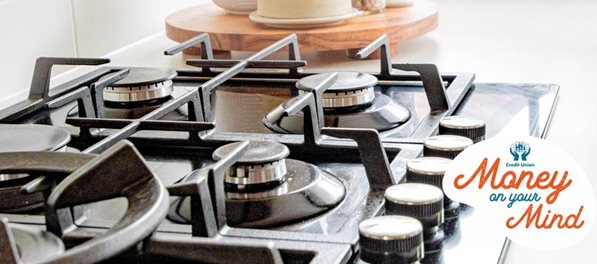Ways to Save Energy in Each Room of your Home
Education
3
min read
26 Aug 2022

Due to supply and demand issues on the global market since 2020, energy suppliers have been steadily charging more and more for gas and electricity. Many households are now facing energy poverty - and need support to tackle rising household costs across the board.
Why are energy prices increasing in Ireland?
Energy supply and demand has been influenced by a large number of factors, which include Covid and the war in Ukraine. During Covid, many companies were in lockdown. This caused logistical issues with gas and oil deliveries, driving their price up. Ukraine is also the main route for gas from Russia, who supplies up to 40% of EU gas. Russian embargoes have also increased the price of gas.
Knowing the most effective energy-saving methods in the home can help reduce your energy bills. Though switching off lights and plug sockets can be useful, we’ve outlined the many other ways to keep energy usage and costs to a minimum. We’ll start with the overall areas where you can save money - draughts and heating - then look at each room specifically.
As part of our Money on Your Mind Series, our Cost of Living Campaign provides jargon-free insights, advice and resources to support households through rising inflation and energy price increases. This blog look at ways you can reduce the energy consumption in each room of your home. If you’re in financial difficulty and need to talk, you can always contact your local credit union here. We’re here to help.
How to Stop Draughts

Ensuring your house is draught-free means a more energy efficient home, so you can turn down your thermostat and reduce your bills. Although you might consider larger works like wall insulation, we’ve listed some quick, easy fixes below.
For windows, you can purchase self-adhesive, metal or plastic strips with brushes to stick around any gaps on the window frame. Draught-proofing doors can stop a lot of heat escaping, and it won’t cost much. Metal key-hole or letterbox covers can be placed on all relevant doors to prevent draughts. For any gaps at the bottom of doors, you can use a draught excluder - a fitted brush or flap which blocks air. For any gaps on the sides of your door, you can fit foam or brush strips, similar to those used on windows.
Read more about how to fix a cold home in our blog with Roisin Murphy.
Heating Controls and Temperatures
Use smart heating controls to manage the temperature of your home, set timers, and turn off and on your heat from your smartphone (The - have I turned the heat off? - fear will haunt you no more).
The SEAI say you can reduce your heating bill by 10% by turning your thermostat down by just 1 degree. They advise 20 degrees as the optimal temperature for living areas, while hallways and bedrooms should be cooler. You can read their recommendations here which includes the optimal temperature for household appliances.
How to save energy in the kitchen

With appliances like an oven, washing machine and fridge, the kitchen can be one of the most energy-draining rooms in the house. But there are many things you can do to save energy.
The Oven
The oven can use a significant amount of household energy, but there are some alternative cooking methods that can help.
An air fryer cooks food much faster and so uses less electricity, as does the microwave, which can cook things like potatoes and vegetables, as well as reheat pre-cooked food. Using the toaster, rather than the grill, as well as the kettle to boil water as opposed to the hob, uses much less electricity.
Batch cooking at the beginning of the week means you don’t have to use the oven every day. Cooking double or triple the amount you need, then storing it in the fridge or freezer means you can reheat during the week.
When you do use oven, some small changes can help you save energy. If cooking on the hob, make sure to cover pots and pans with a lid for more efficient use of heat. If you have an electric hob, turn off the cooker a few minutes before your food is finished, as it takes a while to cool down and will continue to cook your food.
Your electric oven, dishwasher, microwave, washing machine, and tumble-dryer will all consume a lot of electricity when left on standby. Try to get turn them off at the plug to save energy.
The Fridge
Fridges and freezers are one of the biggest consumers of electricity in the home, because they’re always on. Make sure there’s a 10cm gap behind your fridge, so heat can escape more easily, and keep the area dust-free. Try to keep the door closed as much as possible, as the longer it is open, the more energy it uses to stay cool. Defrosting your freezer regularly will help it run more efficiently, too.
Dishwasher and Washing Machines
For appliances that clean things in bulk, like dishwashers and washing machines, it can be helpful to make sure they’re fully loaded each time, so you use them less often. Using ‘eco’ or low temperature settings can also greatly reduce energy consumption – 30 degrees is widely recognised as a low-temperature standard, and new machines must now offer a 20 degree option.
Ensure these appliances are maintained well, as they will run more efficiently: try not to overload them, and clean filters, exteriors and interiors regularly.
How to save energy in the living room
The Chimney
Many homes built before 1960 have chimneys. Although they provide beautiful, roaring fires, they may not be the most environmentally friendly or cost-effective way to heat your home. If your home is tall, a lot of air will escape up the chimney when you put the heat on – this is called a stack effect.
Prevent this by fitting a draft excluder (£20/€22), a small device fitted into your chimney to stop warm air escaping and cold air coming in. You can opt for an inflatable device with a vent, or something made of breathable material, like wool.
TVs and Other Appliances
Appliances like sound-systems, gaming consoles and TVs will use up a lot of energy if they are left on, or even if they’re on standby. Try to switch them off at the plug to avoid a large build-up of energy usage.
Light
Let there be light. Open curtains and blinds and allow the sun warm up the room naturally, during the daytime.
How to save energy in the bedroom
Keeping your bedroom at a cooler temperature can help you sleep better (according to the sleep foundation, that’s 18.3 Celsius). A thermostatic radiator valve will help you set the right temperature in each room of your house, while a radiator booster can push hot air around the room and away from the radiator and the windows, which means a more consistent room temperature for sleeping.
Many of us charge our phones beside our bed, sometimes leaving them plugged in overnight. Save money and energy by using a solar charger. Simple leave the charger beside a window during the day, and it will have absorbed enough light to charge your phone at night.
How to save energy in the bathroom
Although most gaps should be blocked to prevent draughts, areas like the bathroom, where a lot of moisture is produced, need good ventilation. Ventilating the bathroom properly will eradicate any moisture from the air created from showering, making it easier – and less costly - to heat. Open the window or use an extractor fan, if you have one.
Although spending a few minutes longer in a hot shower, especially in the winter, is tempting, according to a 2021 report by Energy Saving Trust, a family of four could save up to £75 a year by spending just one minute less in the shower.
Money on your Mind is a credit union series which aims to help you build your financial confidence. You’ll find insights, tips and suggestion to help you feel more knowledgeable about managing your money, as well as jargon free answers to some basic financial questions. The content within this series is aimed to provide general guidance and information only. It does not represent financial advice.